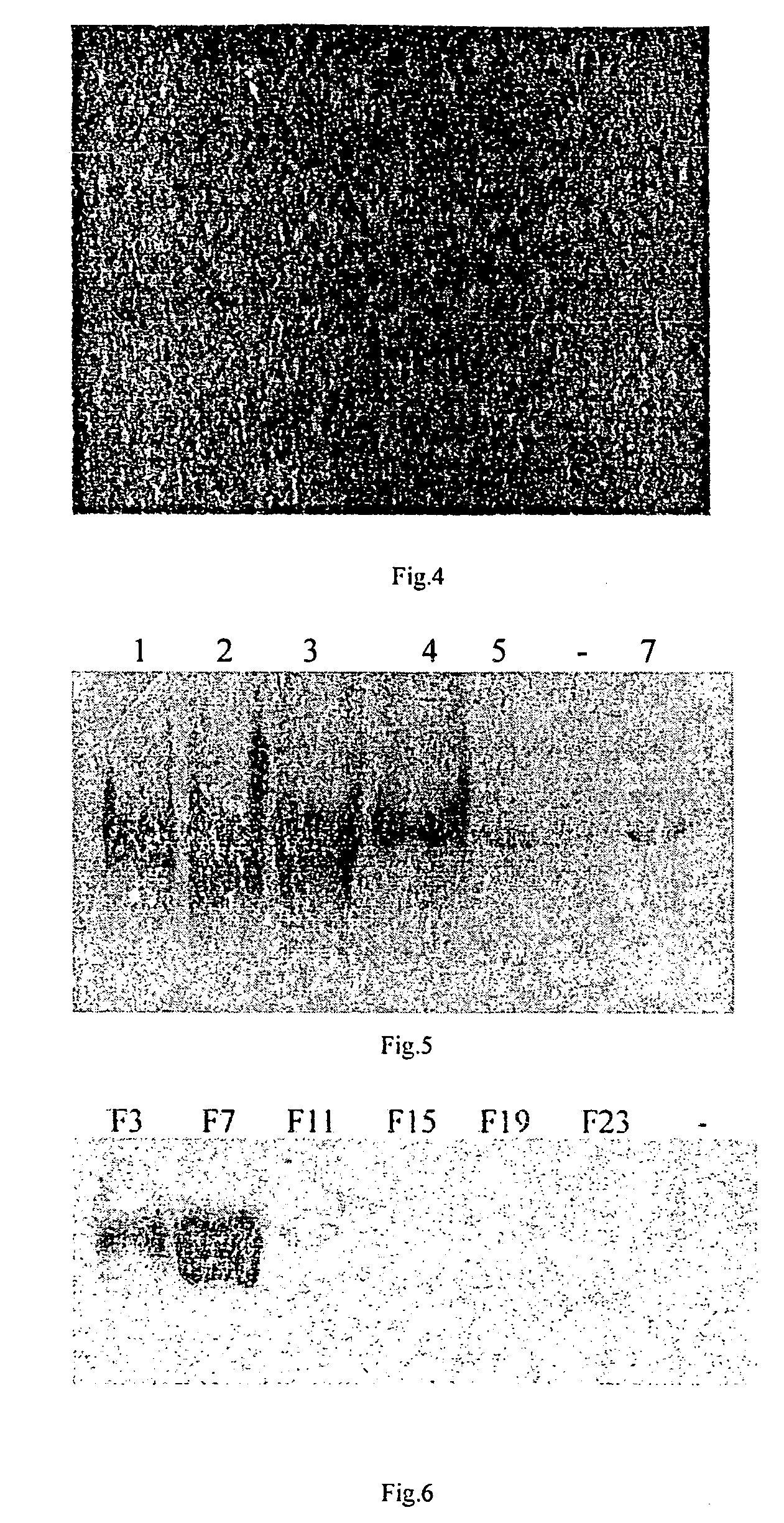Human source leading sequence, gene vector and gene expression strategy
a leading sequence and gene technology, applied in the field of human source leading sequence, gene vector and gene expression strategy, can solve the problems of unsolved problems such as poor safety, unfavorable application, and inability to effectively express therapeutic genes for a long time, and achieve the effects of low gene insertion efficiency, poor safety, and limited application
- Summary
- Abstract
- Description
- Claims
- Application Information
AI Technical Summary
Benefits of technology
Problems solved by technology
Method used
Image
Examples
example one
[0039]The preparation of the gene targeting sequence provided in the present invention:
[0040]1. Obtaining a PAC clone containing a gene targeting sequence[0041]1.1 Construct a BM-specific pUC19 library by micro-dissection, PCR and microcloning technologies (Deng H—X, Yoshiura K, Dirks R W, et al. Hum Genet 1992, 89:13.)[0042]1.2 Obtaining and identifying BM-specific single copy DNA[0043](1) The preparation of colony matrix membrane: Draw squares 14×14 on two pieces of nylon membrane and mark them A and B. Place the two membranes on two plates containing solid LB medium, respectively. Pick at random white clones and transfer the clones into squares of two same coordinates, a total of 14×12 clones. Single copy DNA of 100 ng is added to the line 13 as a positive control. No addition of DNA is used as a negative control. The two plates are respectively placed in a incubator at 37° C. for 10-12 hr, then membrane B is kept at 4° C. Membrane A is taken out of the plate, and processed with ...
example two
[0063]The preparation of gene vector provided by the present invention
[0064]1. Construction of gene vector and transfer of gene of interest[0065]1.1 Construction of vector[0066]1.1.1 PAC DNA is digested by Nsi I and Stu I (blunt enzyme), 3.8 kb DNA fragment is recovered by general agarose gel electrophoresis and purification by electroelution;[0067]1.1.2 Digest pGEM-TK vector DNA by Hind III, make it blunt by Klenow enzyme, to generate a blunt end;[0068]1.1.3 The linearized pGEM-TK / Hind III is further digested by Nsi I;[0069]1.1.4 The digested PAC DNA of 3.8 kb and pGEM-TK were ligated at 16° C. for 17 hr;[0070]1.1.5 Ligated product was transformed into JM109 competent bacteria. The transformed bacteria were incubated on a plate containing ampicillin for 18 hr at 37° C.;[0071]1.1.6 Pick individual clones at random, determine positive clones by Nsi I and Nhe I digestion after plasmid extraction. The recombinant plasmid was named pGEM-TK-3.8 Kb.[0072]1.1.7 Obtain Neo gene by digesting...
example three
[0103]Introduce gene vector carrying TPA or FIX gene into host cells and express them in vitro
[0104]1. Materials[0105]1.1 cell: HT1080[0106]culture medium: high-sugar DMEM+10% FBS(HT1080)EMEM+10% FBS[0107]1.2 Electroporation apparatus: Bio-Rad company
[0108]2. Methods:[0109]1) Cells are inoculated in 75 cm2 canted-neck flask, cultured and grown to 70%-80% confluence.[0110]2) The cells are harvested and washed twice with HeBs buffer solution, and the cell number is counted.[0111]3) Centrifuge at 1500 rpm, 4° C. for 10 min.[0112]4) Resuspend with proper volume of HeBS, dilute the cell density to 106-107 / ml[0113]5) Take 0.4 ml electroporation cuvette, add 0.8 ml cell suspension, 10 ul vector DNA[0114]6) Electroporate the cells at 260v, 550 uFf, lasting 11-13 ms[0115]7) The electroporated cells above are transferred into a 75 cm2 canted-neck flask, 14 ml culture medium containing ampicillin / streptomycin is added, and the cells are incubated in 5% CO2, at 37° C., 24-48 hr.[0116]8) Add G41...
PUM
| Property | Measurement | Unit |
|---|---|---|
| Fraction | aaaaa | aaaaa |
| Time | aaaaa | aaaaa |
| Time | aaaaa | aaaaa |
Abstract
Description
Claims
Application Information
 Login to View More
Login to View More - R&D
- Intellectual Property
- Life Sciences
- Materials
- Tech Scout
- Unparalleled Data Quality
- Higher Quality Content
- 60% Fewer Hallucinations
Browse by: Latest US Patents, China's latest patents, Technical Efficacy Thesaurus, Application Domain, Technology Topic, Popular Technical Reports.
© 2025 PatSnap. All rights reserved.Legal|Privacy policy|Modern Slavery Act Transparency Statement|Sitemap|About US| Contact US: help@patsnap.com



